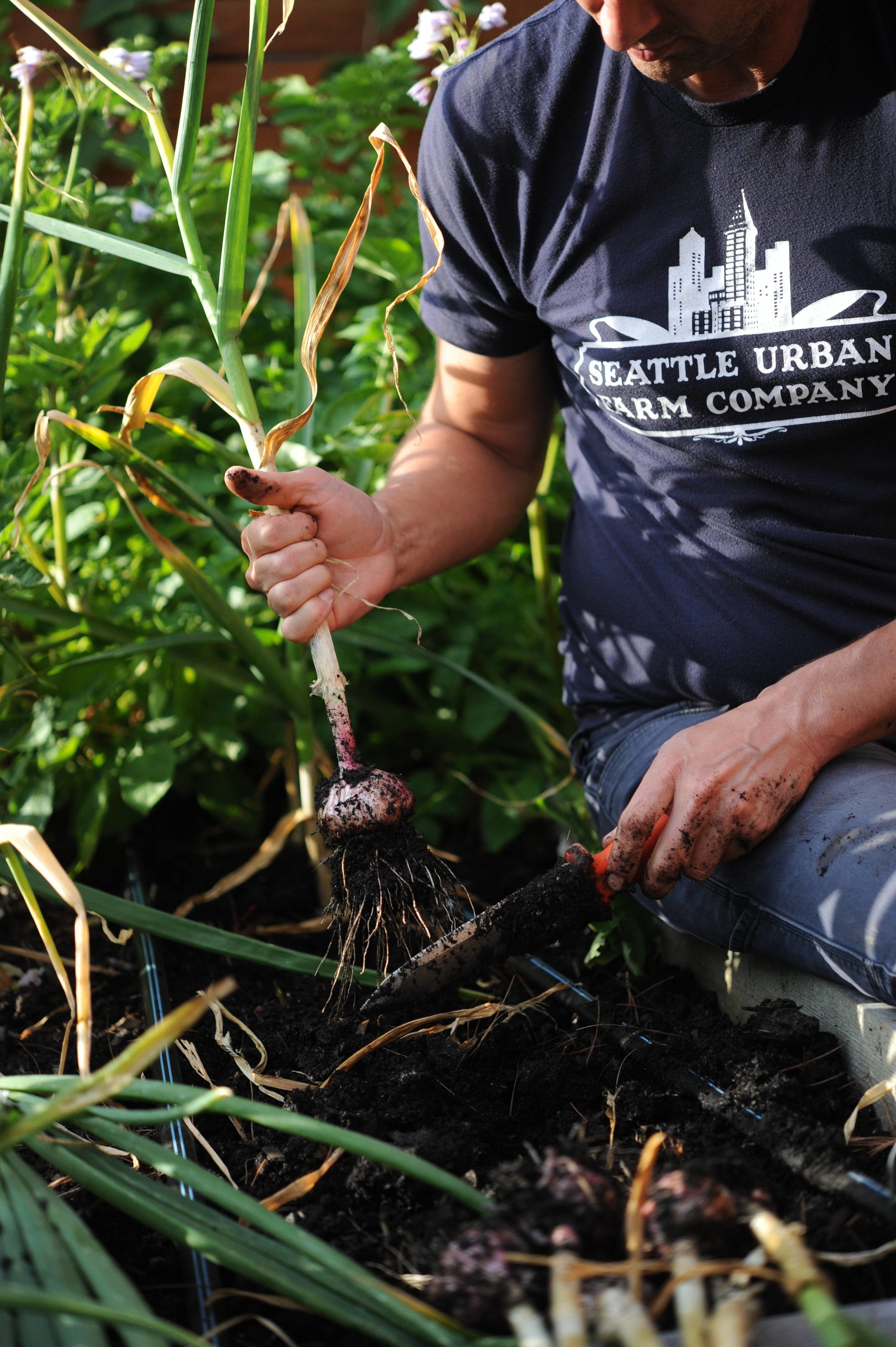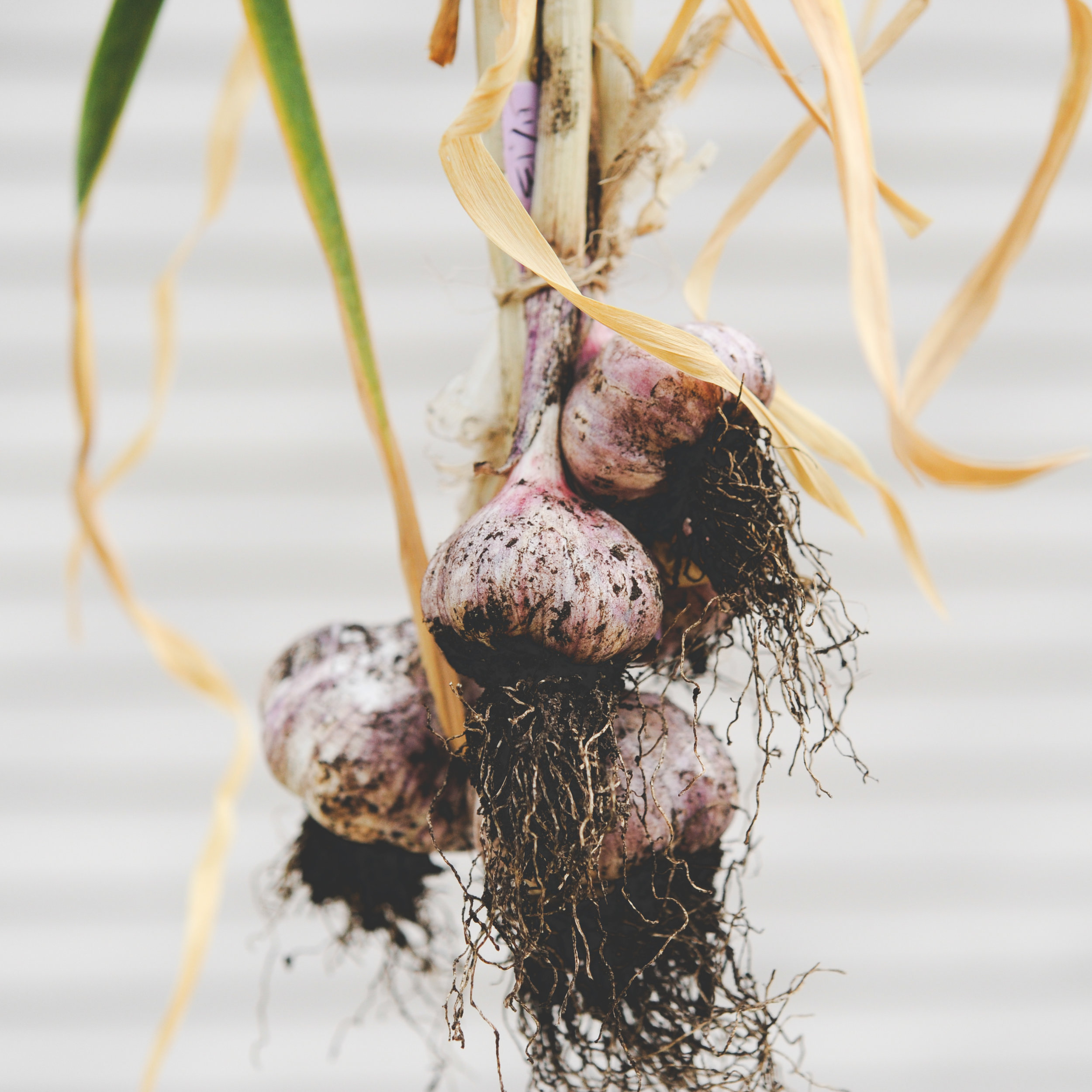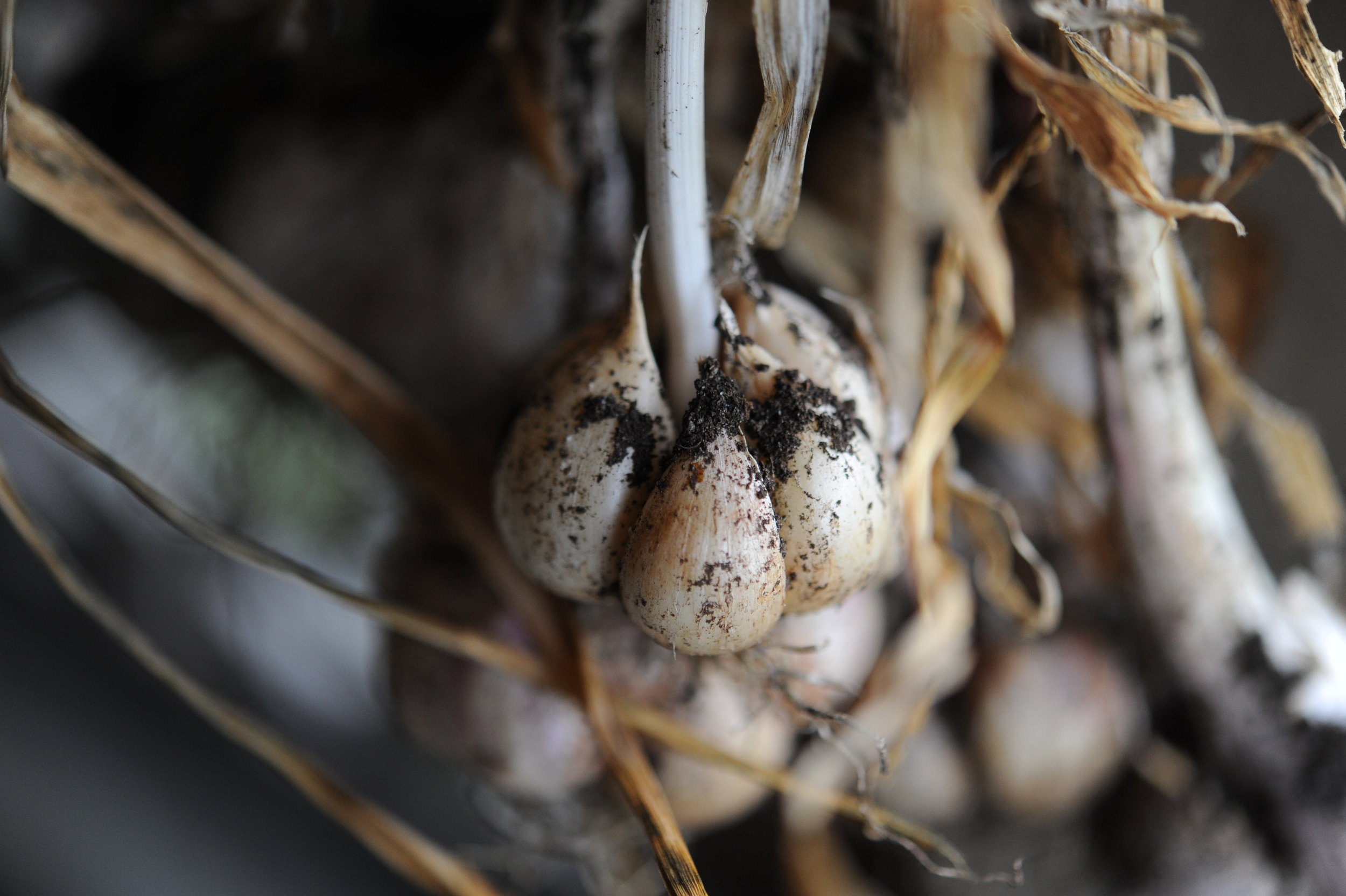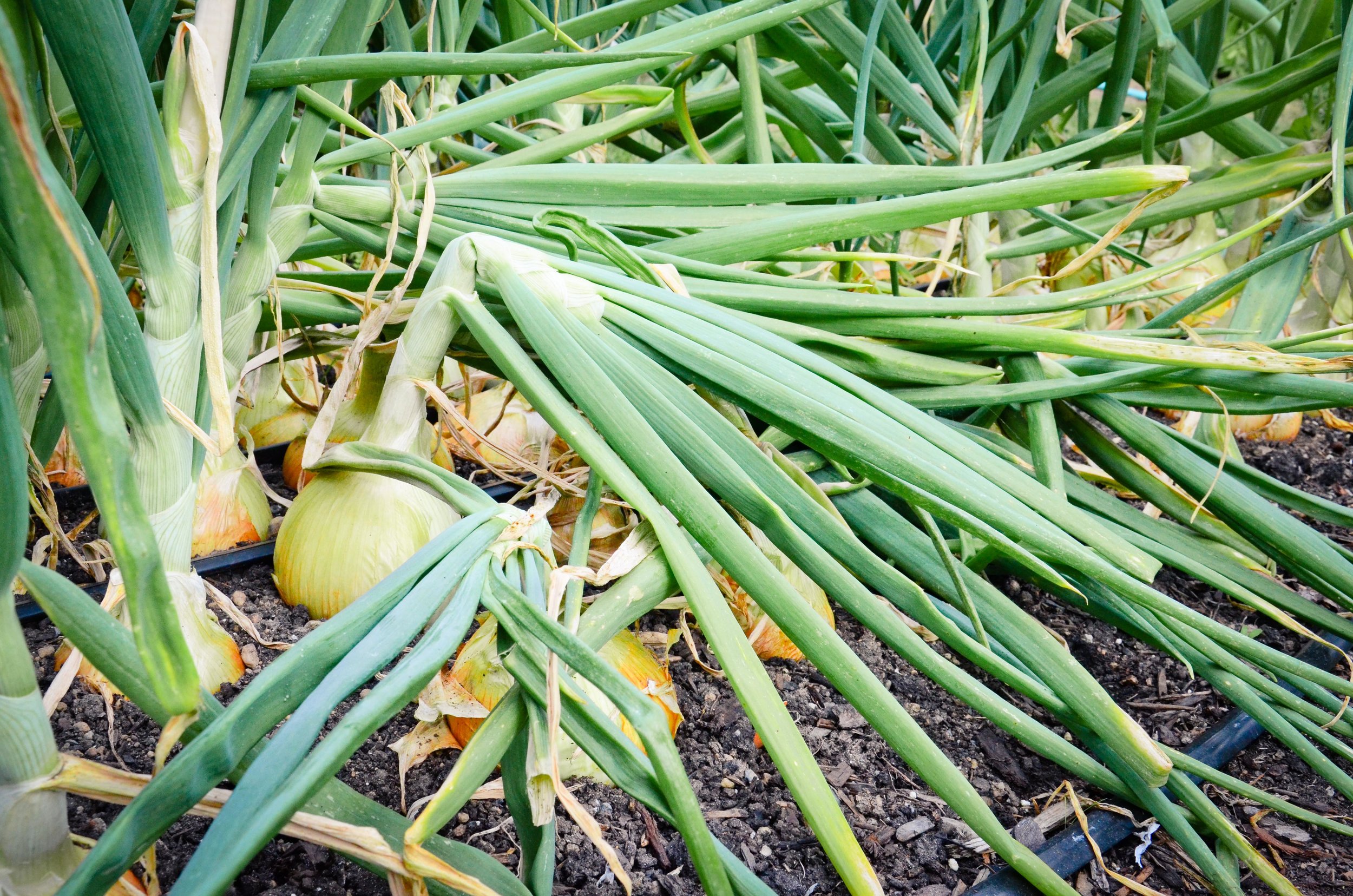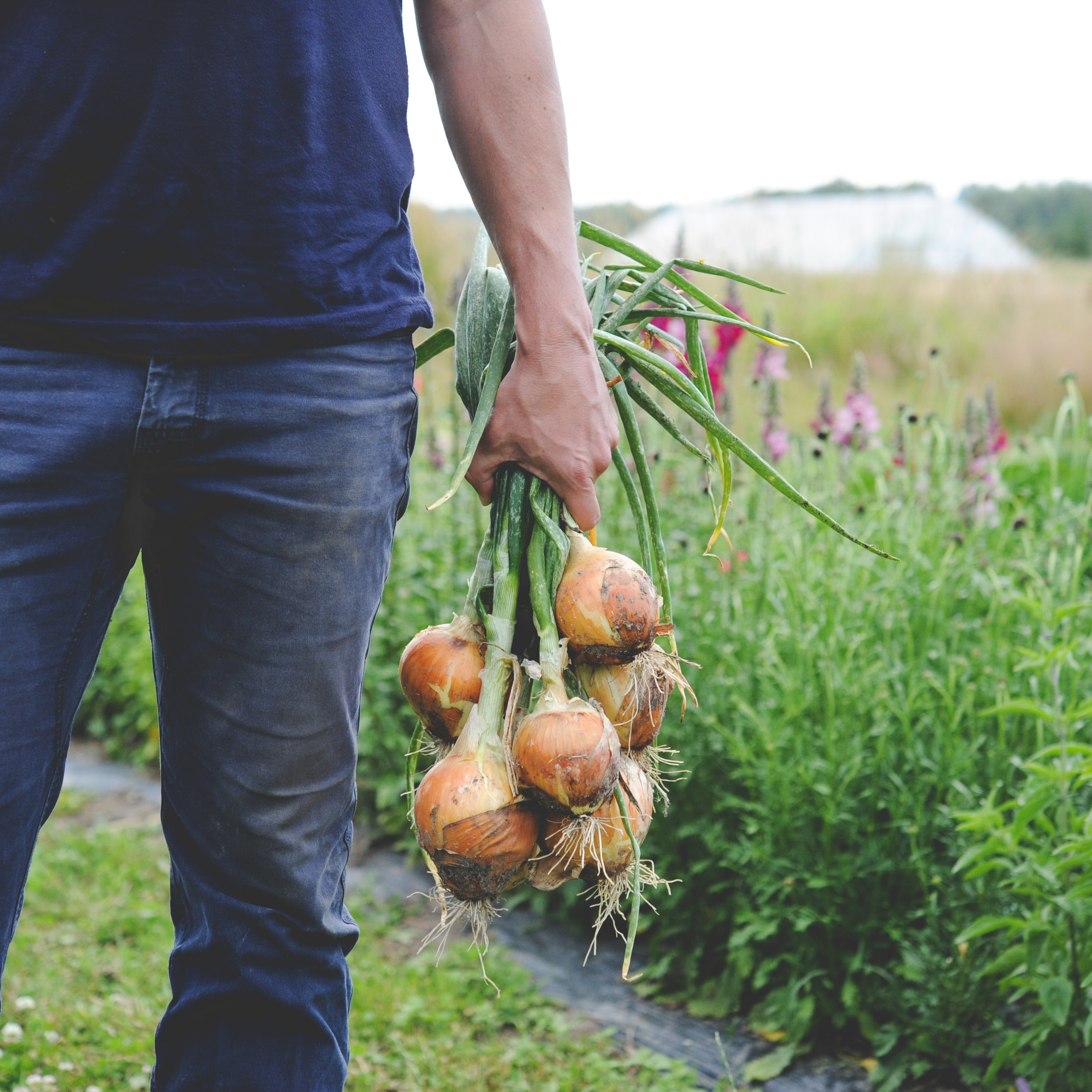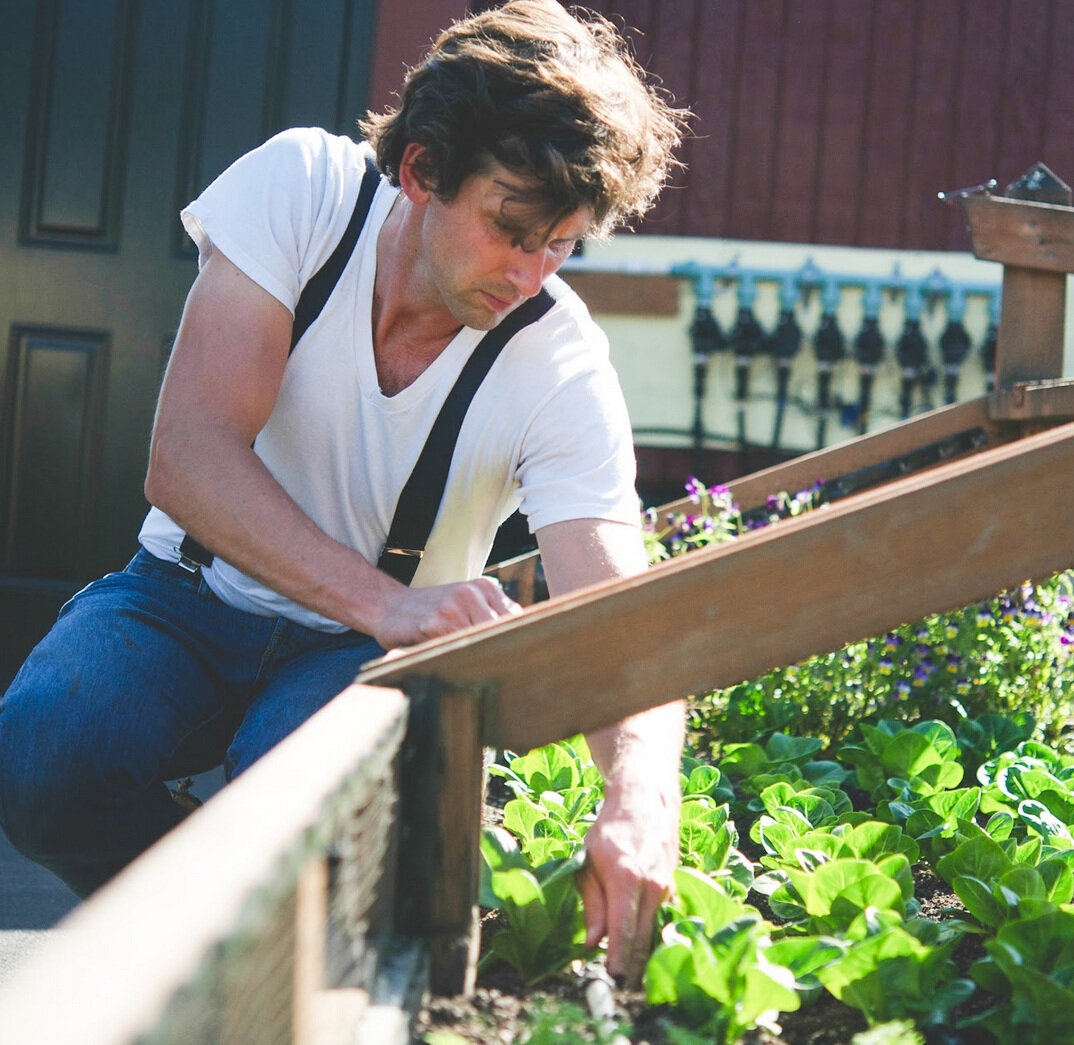Garlic and onions are some of the most satisfying crops you can grow in your home garden. Garlic is generally planted in the Fall, and onions are among the first transplants to be tucked into the early spring garden. These crops are both ready to harvest at the onset of peak harvest season, a harbinger of the forthcoming abundance. Luckily the crops are happy to be stored away for us to enjoy during less bounteous times of year. In this episode, we’re sharing some tips that will help you know when your crops are ready to harvest and how to store them.
HOW TO LISTEN:
Subscribe in iTunes (or your favorite podcast player) to have our podcasts sent directly to your device.
Listen right now in your browser by clicking above.
SHOW NOTES:
In this episode, we discuss:
What to look for to know your garlic and onions are ready to harvest
Harvesting methods for both garlic and onions
How to cure your crops for storage
Storage tips and lifespans
Important Take-aways:
Garlic is ready to be harvested when half of the stems have turned brown (half should still be green) and started to dry out.
Onions are ready to harvest when the stems start to turn brown and die back. The tops will start to flop over and a portion of the bulb will usually be above the soil surface.
Garlic and onions are harvested by lifting entire plant out of the ground with a spade, fork or trowel (or by hand). With both crops, the less you do to the harvested plant, the longer and better they will store.
After harvesting, knock off any large clumps of dirt but never wash your garlic or onions with water.
Hang garlic in a warm, dry, dark place for several weeks to cure. After that, the garlic stalk and root can be trimmed back to so that the bulb resembles one that you would buy at the store or farmers market.
Cure onions in a dry sunny spot for 5-7 days. Once cured, cut back the stems to about 1 inch above the bulb.
Store garlic and onions in a dark, cool location such as a pantry or basement. Softneck garlic should keep all winter long, while hardneck garlic has a shorter lifespan, but, some say, a superior flavor. The storage life for onions depends on the variety. Generally, yellow types store longest, but be sure to read about the varieties you are growing, or planning to grow before deciding which ones to cook with first. If properly cured and stored, it is possible to eat bulbing onions from midsummer through the following spring.
These are the reusable cotton bags I use to store my onions:
...and a garlic growers bible:
Like what you hear? Please share our podcast with a friend. Subscribe on iTunes or your favorite podcast player so you never miss a beat. And we'd really appreciate you showing us some love by leaving a rating and review on iTunes.


